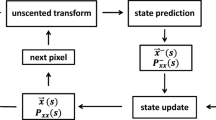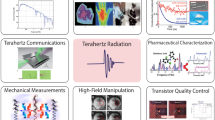Abstract
A wide variety of qualitative methods have been proposed for microwave imaging. It is difficult to select only one of these methods based on a priori information and measurement equipment to achieve a reliable reconstruction. Various arrangements for antennas to be used in, for instance, have been proposed which have direct impacts on the complexity of inverse methods as well as the quality of output images. In this study, four qualitative methods of the linear sampling method (LSM), time reversal (TR), diffraction tomography (DT), and back-projection (BP) have been reviewed in a 2D scenario; the performance of the methods is compared within the same framework of a multi-static configuration. The goal is to compare their resolutions and determine their advantages and drawbacks. It is shown that LSM provides the best azimuth resolution but the worst range resolution. It is almost invariant to dielectric contrast and is appropriate for a wide range of dielectric contrasts and relatively large objects. It is also shown that at relatively low dielectric contrasts, TR images are most similar to the true object, show fewer artifacts, and offer high immunity to noise. While suffering from more artifacts due to the presence of some ghost images, DT offers the best range resolution. The results also show that BP has the worst azimuth resolution when reconstructing deeply-buried targets, although its implementation is straightforward and not computationally complex.








Similar content being viewed by others
References
Gonzalez-Huici, M. A., Catapano, I., & Soldovieri, F. (2014). A comparative study of GPR reconstruction approaches for landmine detection. IEEE Journal of Selected Topics in Applied Earth Observations and Remote Sensing. doi:10.1109/JSTARS.2014.2321276.
Benedetti, M., Donelli, M., & Massa, A. (2007). Multicrack detection in two-dimensional structures by means of GA-based strategies. IEEE Transactions on Antenna and Propagation. doi:10.1109/TAP.2006.888399.
Rocca, P., Oliveri, G., & Massa, A. (2011). Differential evolution as applied to electromagnetics. IEEE Antenna and Propagation Magazine. doi:10.1109/MAP.2011.5773566.
Bozza, G., Estatico, C., Pastorino, M., & Randazzo, A. (2007). Application of an inexact-Newton method within the second-order born approximation to buried objects. IEEE Geoscience and Remote Sensing Letters. doi:10.1109/LGRS.2006.885864.
Pastorino, M. (2010). Microwave imaging. Hoboken, New Jersey: Wiley.
Caorsi, S., & Gamba, P. (1999). Electromagnetic detection of dielectric cylinders by a neural network approach. IEEE Transactions on Geoscience and Remote Sensing. doi:10.1109/36.752198.
Mydur, R., & Michalski, K. A. (2001). A neural-network approach to the electromagnetic imaging of elliptic conducting cylinders. Microwave Optical Technology Letters, 28, 303306.
Bermani, E., Boni, A., Caorsi, S., & Massa, A. (2003). An innovative real-time technique for buried object detection. IEEE Transactions on Geoscience and Remote Sensing. doi:10.1109/TGRS.2003.810928.
Massa, A., Boni, A., & Donelli, M. (2005). A classification approach based on SVM for electromagnetic subsurface sensing. IEEE Transactions on Geoscience and Remote Sensing. doi:10.1109/TGRS.2005.853186.
Estatico, C., Pastorino, P., & Randazzo, A. (2005). An inexact-Newton method for short-range microwave imaging within the second-order Born approximation. IEEE Transactions on Geoscience and Remote Sensing. doi:10.1109/TGRS.2005.856631.
Baussard, A., Miller, E. L., & Lesselier, D. (2004). Adaptive multiscale reconstruction of buried objects. Inverse Problems, 20, S1–S15.
Franceschini, D., Massa, A., Pastorino, M., & Zanetti, A. (2005). Multiresolution iterative retrieval of real inhomogeneous targets. Inverse Problems, 21, S51–S63.
Oliveri, G., Zhong, Y., Chen, X., & Massa, A. (2011). Multi-resolution subspace-based optimization for inverse scattering. Journal of Optical Society of America A. doi:10.1364/JOSAA.32.002218.
Salucci, M., Oliveri, G., Randazzo, A., Pastorino, M., & Massa, A. (2014). Electromagnetic subsurface prospecting by a multifocusing inexact Newton method within the second-order Born approximation. Journal of Optical Society of America A. doi:10.1364/JOSAA.31.001167.
Salucci, M., Oliveri, G., Randazzo, A., Pastorino, M., & Massa, A. (2014). Electromagnetic subsurface prospecting by a fully nonlinear multifocusing inexact Newton method. Journal of Optical Society of America A. doi:10.1364/JOSAA.31.002618.
Salucci, M., Oliveri, G., & Massa, A. (2015). GPR prospecting through an inverse-scattering frequency-hopping multifocusing approach. IEEE Transactions on Geoscience and Remote Sensing. doi:10.1109/TGRS.2015.2444391.
Salucci, M., Poli, L., & Massa, A. (2017). Advanced multi-frequency GPR data processing for non-linear deterministic imaging. Signal Processing. doi:10.1016/j.sigpro.2016.06.019.
Catapano, I., Crocco, L., D’Urso, M., & Isernia, T. (2007). On the effect of support estimation and of a new model in 2-D inverse scattering problems. IEEE Transactions on Antenna and Propagation. doi:10.1109/TAP.2007.898647.
Lopez-Sanchez, J. M., & Fortuny-Guasch, J. (2000). 3-D radar imaging using range migration techniques. IEEE Transactions on Antenna and Propagation. doi:10.1109/8.855491.
Feng, X., & Sato, M. (2004). Pre-stack migration applied to GPR for landmine detection. Inverse Problems, 20, 99–115.
Zhuge, X., Yarovoy, A. G., Savelyev, T., & Ligthart, L. (2010). Modified Kirchhoff migration for UWB MIMO array-based radar imaging. IEEE Transactions on Geoscience and Remote Sensing. doi:10.1109/TGRS.2010.2040747.
Johansson, E.M. and Mast, J.E. (1994). Three-dimensional ground penetrating radar imaging using synthetic aperture time-domain focusing. Proceedings SPIE.
Gurbuz, A.C., Counts, T., Kim, K., McClellan, J.H., & Scott, W.R. (2006). Application of multi-static inversion algorithms to landmine detection. Proceedings SPIE.
Cakoni, F., Fares, M., & Haddar, H. (2006). Analysis of two linear sampling methods applied to electromagnetic imaging of buried objects. Inverse Problems, 22, 845–867.
Catapano, I., & Crocco, L. (2009). An imaging method for concealed targets. IEEE Transactions on Geoscience and Remote Sensing. doi:10.1109/TGRS.2008.2010773.
Liao, D., & Dogaru, T. (2012). Full-wave characterization of rough terrain surface scattering for forward-looking radar applications. IEEE Transactions on Antenna and Propagation. doi:10.1109/TAP.2012.2201076.
Hansen, T. B., & Johansen, P. M. (2000). Inversion scheme for ground penetrating radar that takes into account the planar air-soil interface. IEEE Transactions on Geoscience and Remote Sensing. doi:10.1109/36.823944.
Meincke, P. (2001). Linear GPR Inversion for lossy soil and a planar air-soil interface. IEEE Transactions on Geoscience and Remote Sensing. doi:10.1109/36.975005.
Cui, T. J., & Chew, W. C. (2000). Novel diffraction tomographic algorithm for imaging two-dimensional targets buried under a lossy earth. IEEE Transactions on Geoscience and Remote Sensing. doi:10.1109/36.851784.
Nguyen, L., Dogaru, T., & Innocenti, R. (2009). 3-D SAR image formation for underground targets using ultra-wideband (UWB) radar. Proceedings SPIE. doi:10.1117/12.829631.
Zhang, P., Zhang, X., & Fang, G. (2013). Comparison of the imaging resolutions of time reversal and back-projection algorithms in EM inverse scattering. IEEE Geoscience and Remote Sensing Letters. doi:10.1109/LGRS.2012.2206012.
den Dekker, A. J., & van den Bos, A. (1997). Resolution: A survey. Journal of the Optical Society of America A. doi:10.1364/JOSAA.14.000547.
Gilmore, C., Mojabi, P., Zakaria, A., Pistorius, S., & LoVetri, J. (2010). On super-resolution with an experimental microwave tomography system. IEEE Antennas and Wireless Propagation Letters. doi:10.1109/LAWP.2010.2049471.
Chen, F., & Chew, W. C. (1998). Experimental verification of super resolution in nonlinear inverse scattering. Applied Physics Letters. doi:10.1063/1.121547.
Cui, T. J., Chew, W. C., Yin, X. X., & Hong, W. (2004). Study of resolution and super resolution in electromagnetic imaging for half-space problems. IEEE Transactions on Antenna and Propagation. doi:10.1109/TAP.2004.829847.
Brandfass, M., Lanterman, A. D., & Warnick, K. F. (2001). A comparison of the Colton–Kirsch inverse scattering methods with linearized tomographic inverse scattering. Inverse Problems, 17, 1797–1816.
Hesford, A.J., & Chew, W.C. (2005). A comparison of the computational efficiency of three inverse scattering methods. In IEEE antennas and propagation society international symposium, (pp. 4436–4439).
Zhuge, X., Savelyev, T.G., Yarovoy, A.G., Ligthart, L.P., & Levitas, B. (2009). Comparison of Different Migration Techniques for UWB Short-Range Imaging. In Proceeding 6th European radar conference (EuRAD), (pp. 184–187).
Ghaderi Aram, M., Haghparast, M., Abrishamian, M. S., & Mirtaheri, A. (2015). Comparison of imaging quality between linear sampling method and time reversal in microwave imaging problems. Inverse Problems in Science and Engineering. doi:10.1080/17415977.2015.1104308.
Thanh, N.T., & van Kempen, L., et al. (2008). Comparison of Basic Inversion Techniques for Through-Wall Imaging Using UWB Radar. In Proceeding 5th European radar conference (EuRAD), (pp. 140–143).
Catapano, I., Soldovieri, F., Alli, G., Mollo, G., & Antonio Forte, L. (2015). On the reconstruction capabilities of beamforming and a microwave tomographic approach. IEEE Geoscience and Remote Sensing Letters. doi:10.1109/LGRS.2015.2476514.
Persico, R., Bernini, R., & Soldovieri, F. (2005). The role of the measurement configuration in inverse scattering from buried objects under the Born approximation. IEEE Transactions on Antenna and Propagation. doi:10.1109/TAP.2005.848468.
Catapano, I., Crocco, L., & Isernia, T. (2008). Improved sampling methods for shape reconstruction of 3-D buried targets. IEEE Transactions on Geoscience and Remote Sensing. doi:10.1109/TGRS.2008.921745.
Hansen, T. B., & Meincke, P. (2002). Scattering from a buried circular cylinder illuminated by a three-dimensional source. Radio Science. doi:10.1029/2000RS002573.
Panzer, B. (2004). Development of An Electrically Small Vivaldi Antenna: The CReSIS Aerial Vivaldi (CAV-A). M.Sc. dissertation University of Kansas, USA.
Colton, D., Haddar, H., & Piana, M. (2003). The linear sampling method in inverse electromagnetic scattering theory. Inverse Problems, 19(6), S105–S137.
Leuschen, C. J., & Plumb, R. G. (2001). A matched-filter-based reverse-time migration algorithm for ground-penetrating radar data. IEEE Transactions on Geoscience and Remote Sensing. doi:10.1109/36.921410.
Cui, T. J., & Chew, W. C. (2001). Correction to: Novel diffraction tomographic algorithm for imaging two-dimensional targets buried under a lossy earth. IEEE Transactions on Geoscience and Remote Sensing. doi:10.1109/36.905256.
Giannopoulos, A. (2005). Modelling ground penetrating radar by GprMax. Construction and Building Materials. doi:10.1016/j.conbuildmat.2005.06.007.
Semenov, S., Svenson, R., Bulyshev, A., Souvorov, A., et al. (2000). Spatial resolution of microwave tomography for detection of myocardial ischemia and infarction–experimental study on two-dimensional models. IEEE Transactions on Microwave Theory and Techniques. doi:10.1109/22.842025.
Arbelaez, P., Maire, M., Fowlkes, C., & Malik, J. (2011). Contour detection and hierarchical image segmentation. IEEE Transactions on Pattern Analysis and Machine Intelligence. doi:10.1109/TPAMI.2010.161.
Alqadah, H. F., & Valdivia, N. (2013). A frequency based constraint for a multi-frequency linear sampling method. Inverse Problems. doi:10.1088/0266-5611/29/9/095019.
Author information
Authors and Affiliations
Corresponding author
Rights and permissions
About this article
Cite this article
Ghaderi Aram, M., Dehmollaian, M. & Khaleghi, A. Buried Target Imaging: A Comparative Study. Sens Imaging 18, 19 (2017). https://doi.org/10.1007/s11220-017-0169-4
Received:
Revised:
Published:
DOI: https://doi.org/10.1007/s11220-017-0169-4




